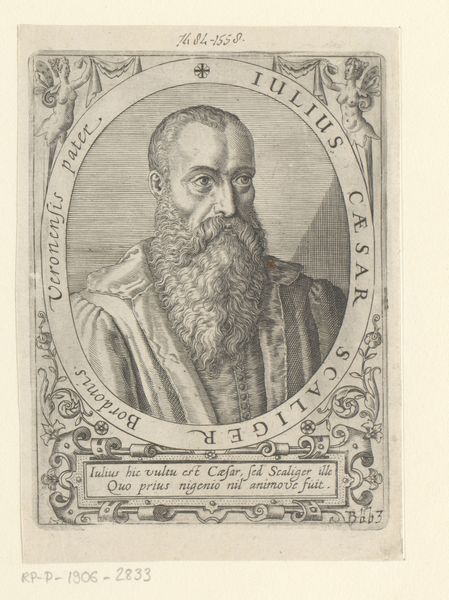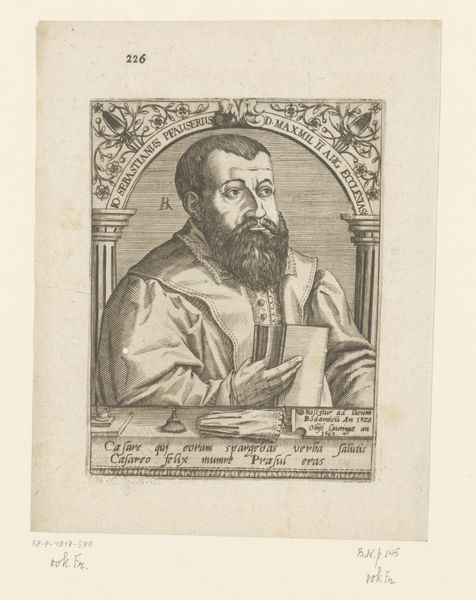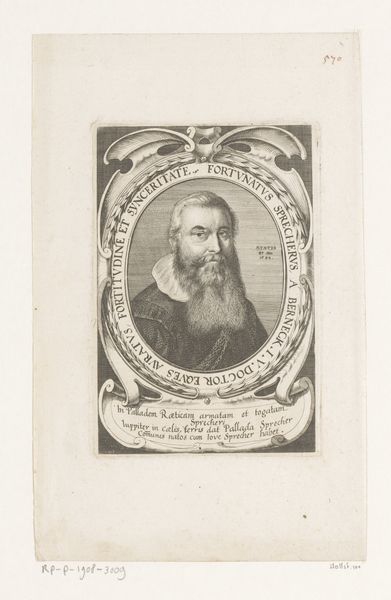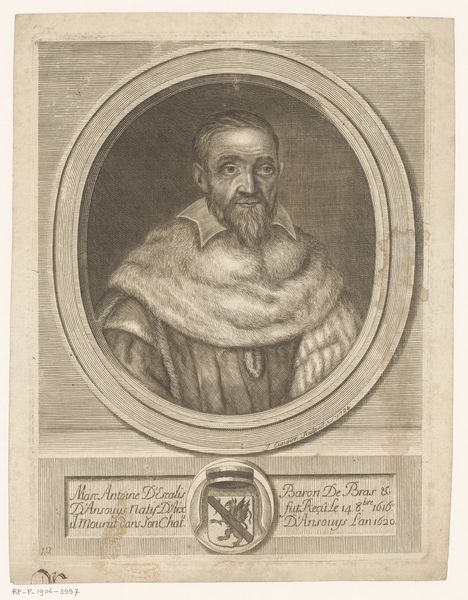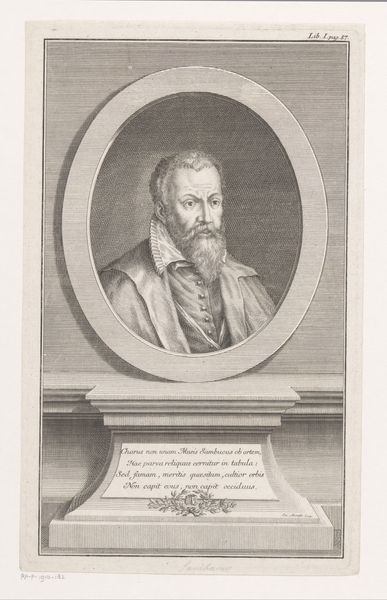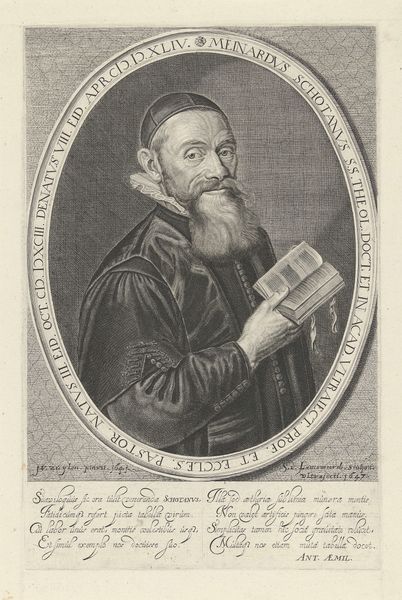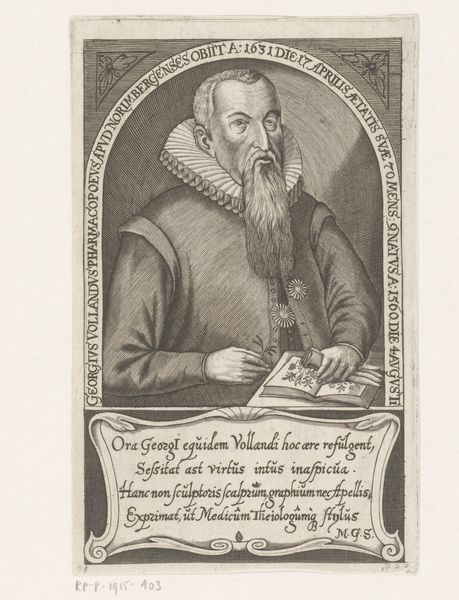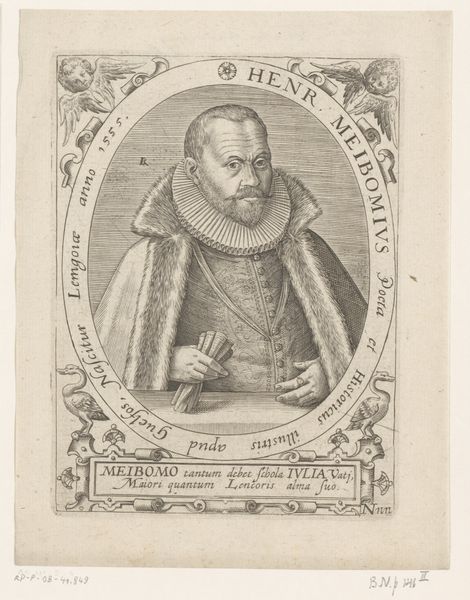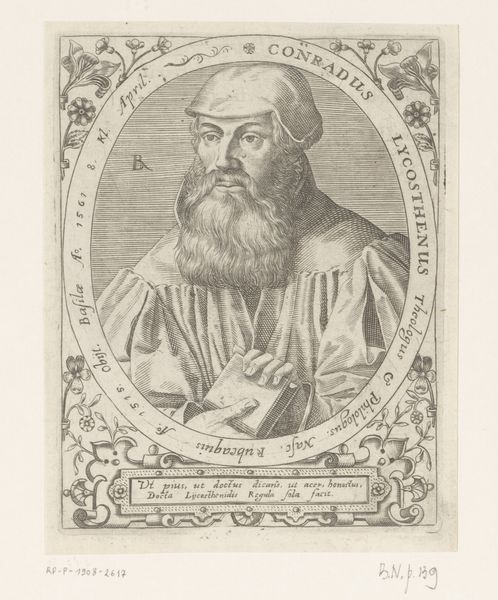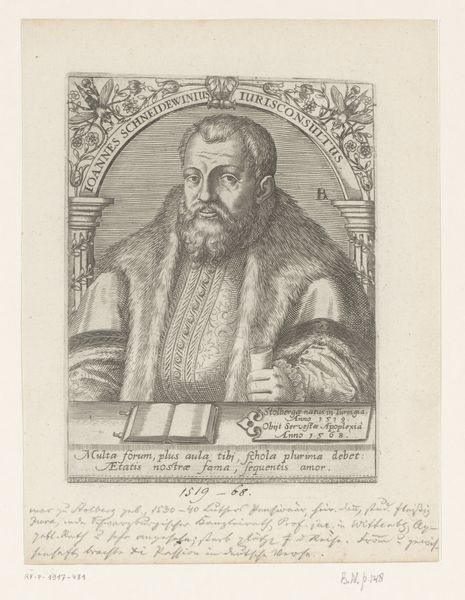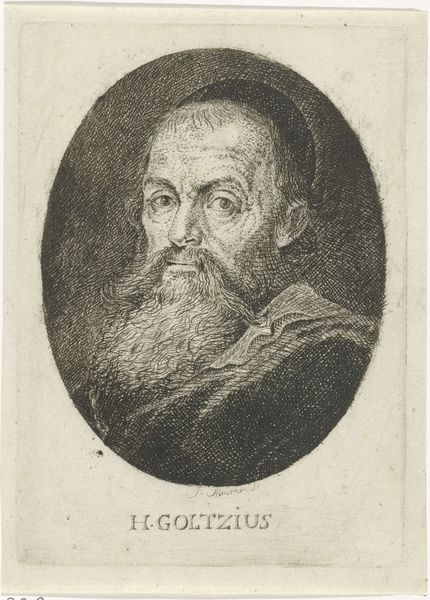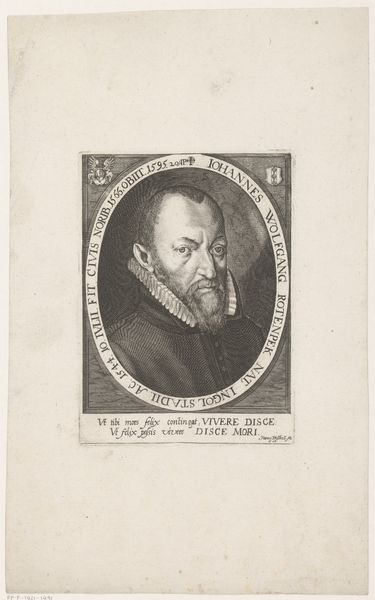
drawing, paper, ink, engraving
#
portrait
#
drawing
#
medieval
#
baroque
#
caricature
#
paper
#
ink
#
pencil drawing
#
portrait drawing
#
northern-renaissance
#
engraving
Dimensions: height 181 mm, width 131 mm
Copyright: Rijks Museum: Open Domain
Editor: This is "Portret van Rembertus Dodonaeus," created in 1682 by Edme de Boulonois. It's an engraving done in ink on paper, and it has a kind of dignified yet slightly stern feeling to it. What's your take on it? Curator: It's fascinating to see Dodonaeus, the famed botanist, immortalized in this medium. Engravings like this served a vital function back then; they circulated knowledge and built reputations within scholarly communities. Think of it as the pre-digital academic headshot. This image wasn't just art, it was a form of public relations, subtly shaping how Dodonaeus and his work were perceived. What strikes you about how he’s presented? Editor: Well, he certainly looks important! The fur collar, the serious expression... it all suggests a man of considerable standing. Almost intimidating. Curator: Precisely. And consider where such portraits were displayed – often in libraries or private collections – reinforcing the power of knowledge and those who possessed it. The baroque style, even in monochrome, contributes to this sense of grandeur, fitting neatly within the socio-political landscape of the 17th century where image and status were intrinsically linked. Editor: That’s a really interesting way to look at it. It makes me wonder about who commissioned the piece and the audience they had in mind. Curator: Exactly! These questions are crucial to understanding the portrait’s purpose. It moves beyond just being a likeness and becomes a cultural artifact. Considering the broader social context adds layers to the viewing experience. Editor: I've learned a lot about looking beyond the surface. Thanks! Curator: My pleasure. There's always more to uncover when you view art as part of its historical and social fabric.
Comments
No comments
Be the first to comment and join the conversation on the ultimate creative platform.
